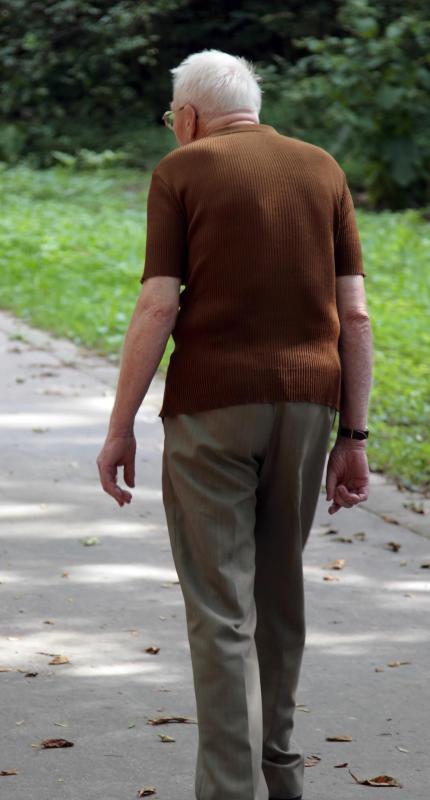At TheHealthBoard, we're committed to delivering accurate, trustworthy information. Our expert-authored content is rigorously fact-checked and sourced from credible authorities. Discover how we uphold the highest standards in providing you with reliable knowledge.
What is Thoracic Kyphosis?
Also known as thoracic spine kyphosis, thoracic kyphosis is a condition in which the upper portion of the back becomes rounded. A condition of this type is beyond the amount of rounding that some people experience due to poor posture. With a kyphotic thoracic spine, the amount of rounding usually exceeds forty to forty-five degrees. In popular culture, people with this condition are sometimes referred to as hunchbacks.
There are several symptoms that indicate the development of thoracic kyphosis. Stiffness or tenderness in the spinal column is very common. Mild back pain that seems to begin in the upper portion of the back and move down to the lower back is also often associated with an emerging case of thoracic kyphosis. The individual will also find that it is harder to maintain proper posture while sitting at a desk or even when standing upright. However, it is important to note that not all people suffering with this condition will manifest any signs or symptoms until the condition is well-established.

There are actually three different types of thoracic kyphosis. Postural kyphosis is usually mild and does not progress beyond a certain point. With this type, the use of thoracic kyphosis exercises can often help alleviate any back pain present. Along with using exercises to strengthen the back muscles, sleeping on a firm mattress sometimes helps with pain management. Over the counter medications may also be used to help ease any pain that results from the condition.

With structural thoracic kyphosis, there is usually some type of abnormality in the development of the spine and upper back. The exact range of treatment will depend on the age and gender of the patient, as well as the rigidity that is present in the curvature of the spine. Physical therapy can provide some relief from the pain, along with a series of exercises performed regularly. The use of a back brace may also be a factor in treating this type of kyphosis. Anti-inflammatory medications can prove helpful in pain management.

A third form of thoracic kyphosis is known as osteoporosis-related kyphosis. Here, there is a series of compression fractures present in the back, usually due to low bone density. The bones are unable to provide adequate support, leading to a curvature of the upper back. The scope of treatment will depend on the severity of the bone density problem. In some cases, exercises and physical therapy may actually do more damage than help.

In some cases, surgery is recommended for treatment of thoracic kyphosis. This is true when the degree of curvature does not respond to other treatments, or when severe pain or paralysis begins to take place. If there is an indication that the reason for the kyphosis is the presence of a tumor, surgery to remove the tumor may help to alleviate many of the symptoms and allow other treatments to begin having a positive impact on the patient’s condition.
AS FEATURED ON:
AS FEATURED ON:
















Discuss this Article
Post your comments